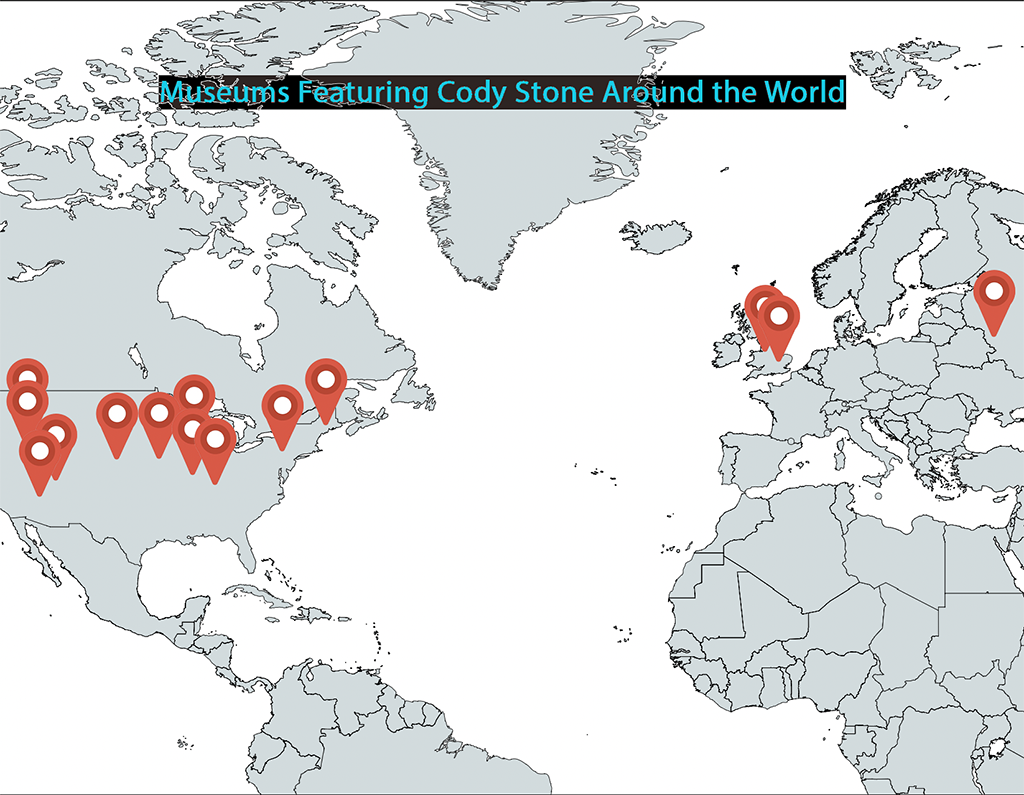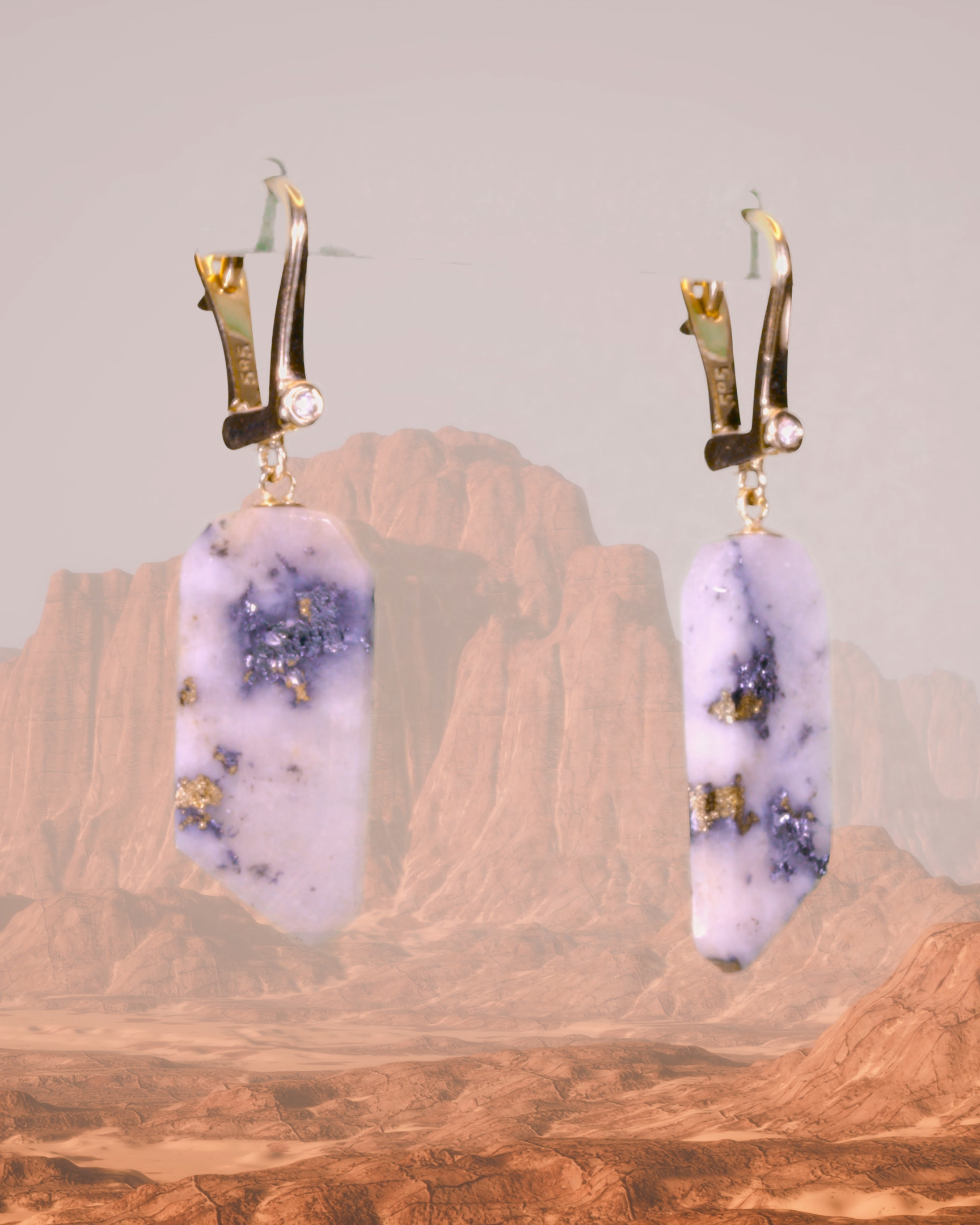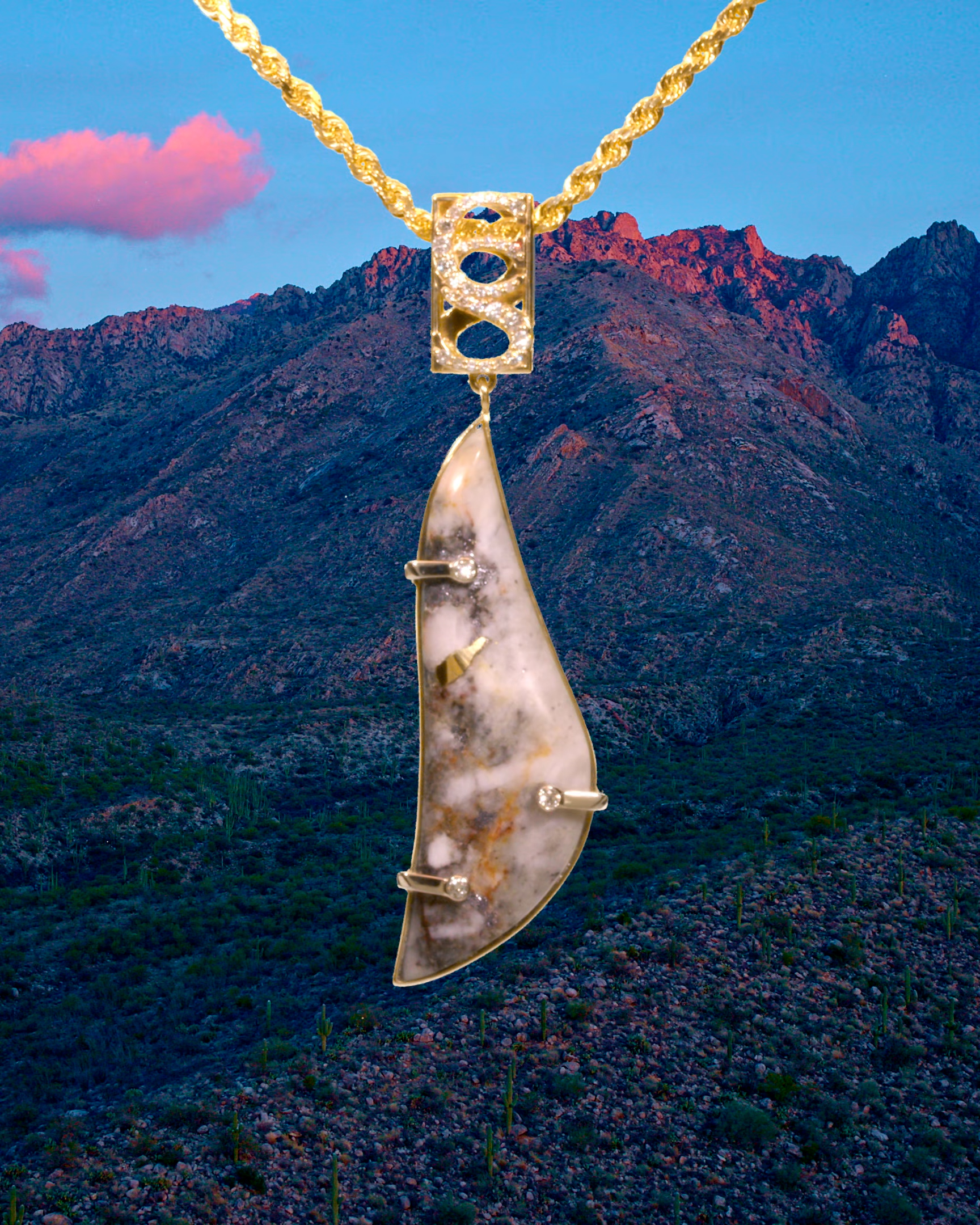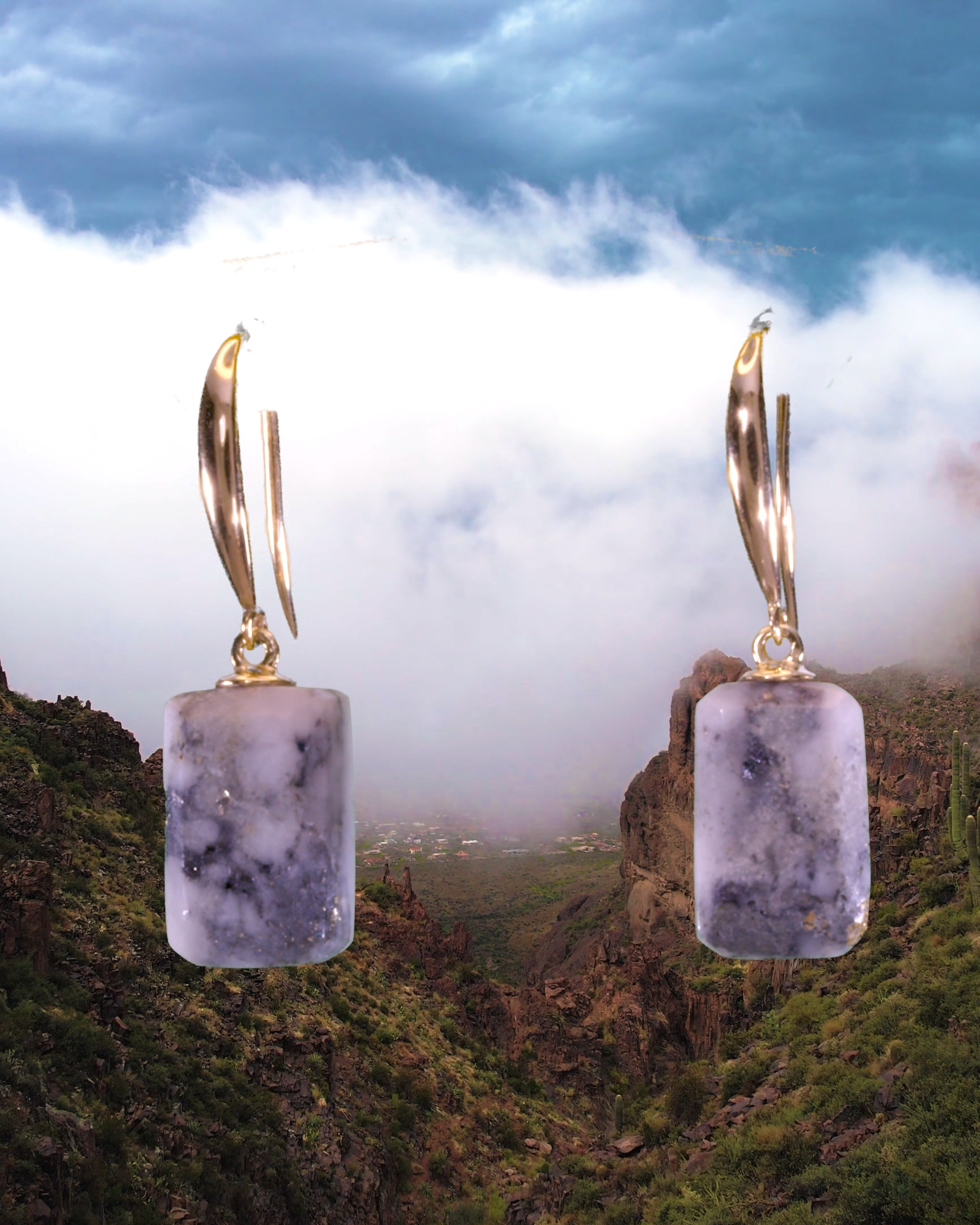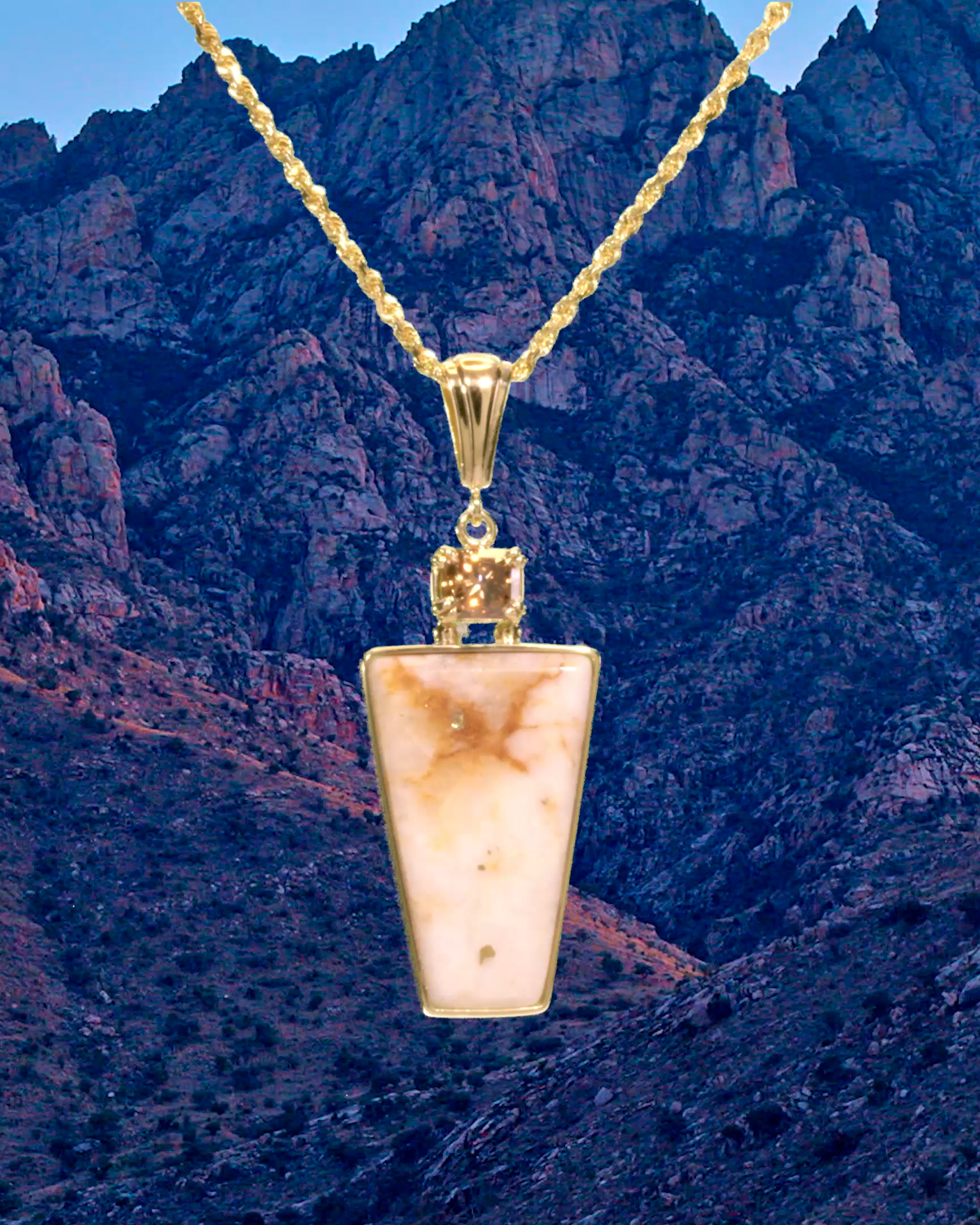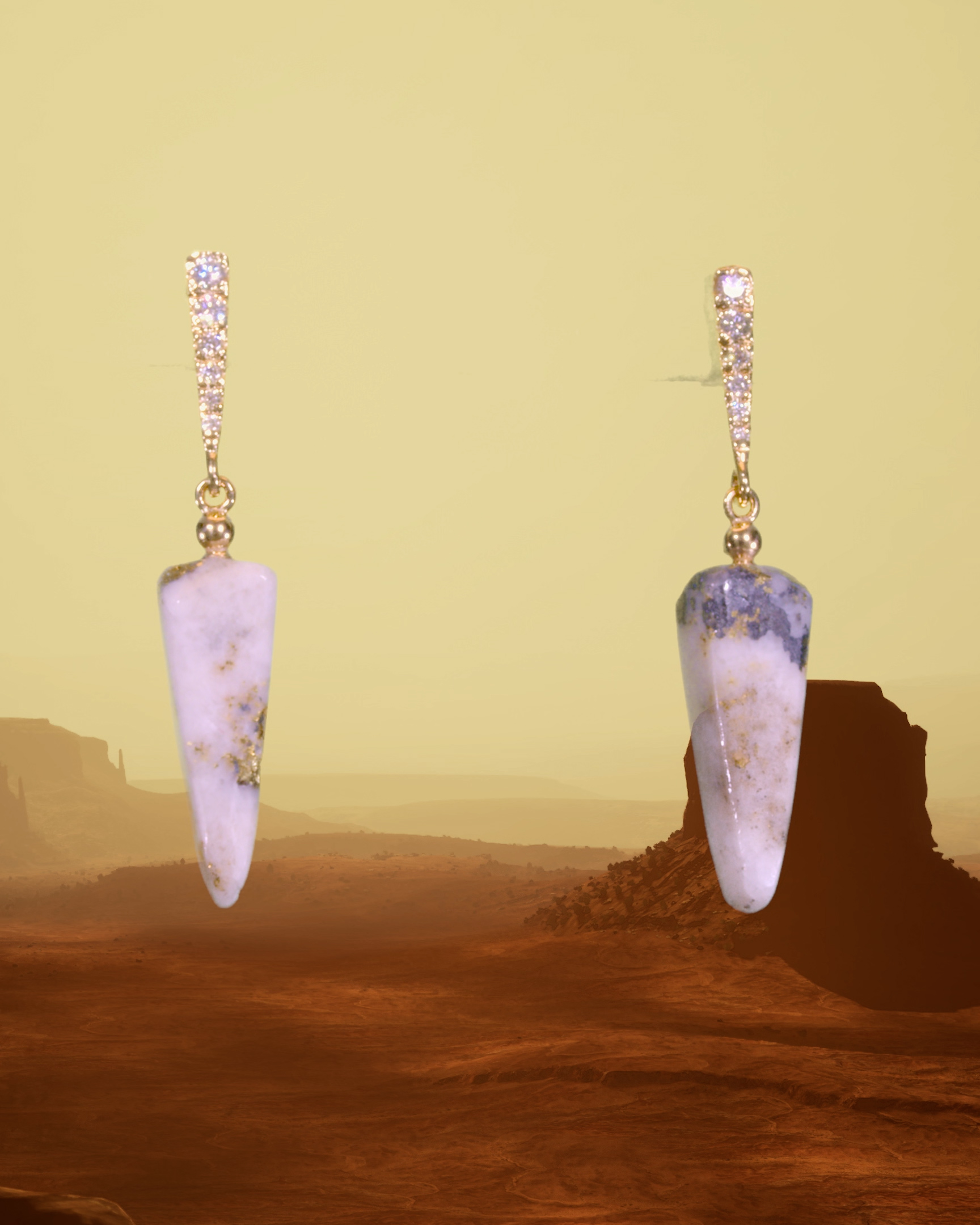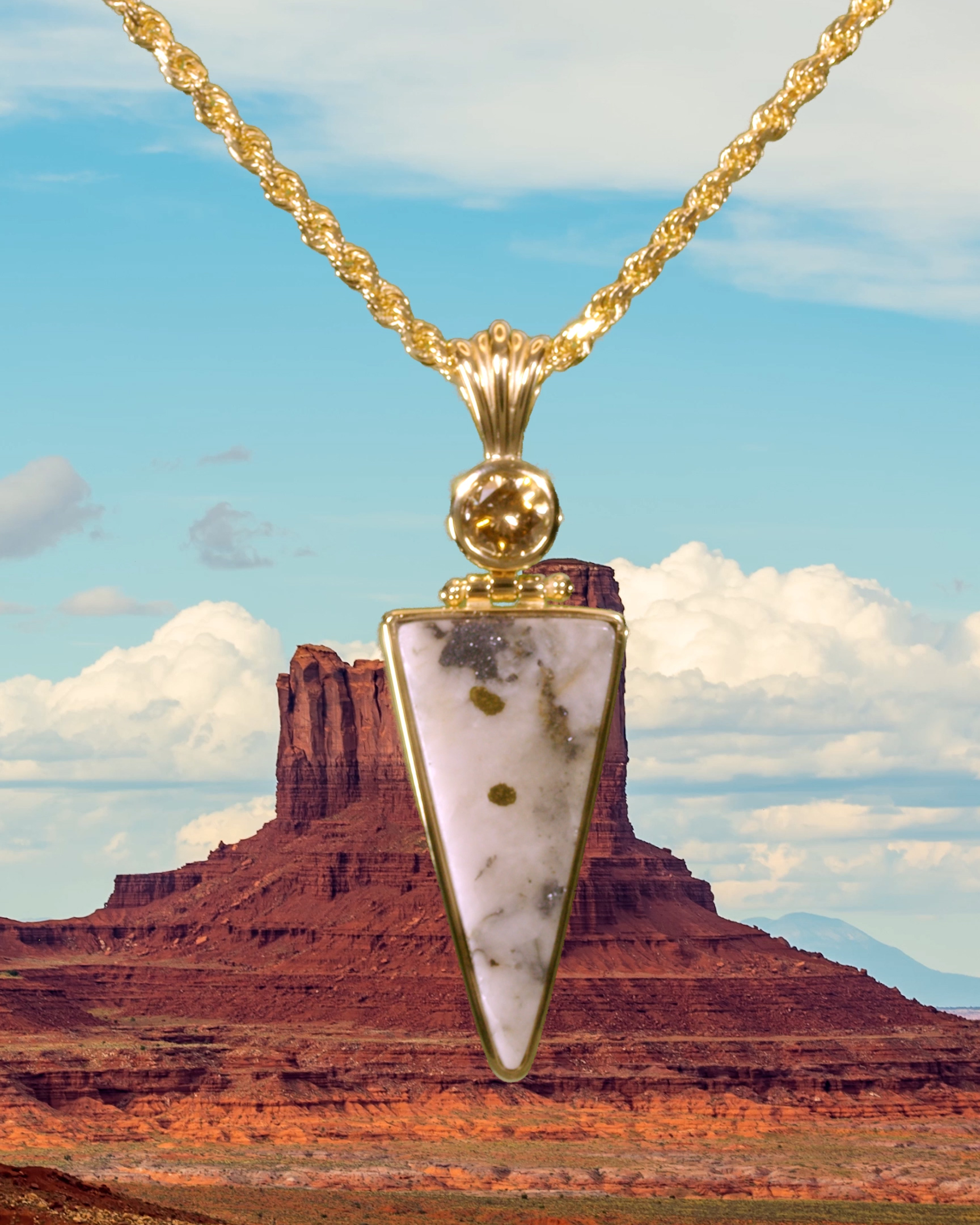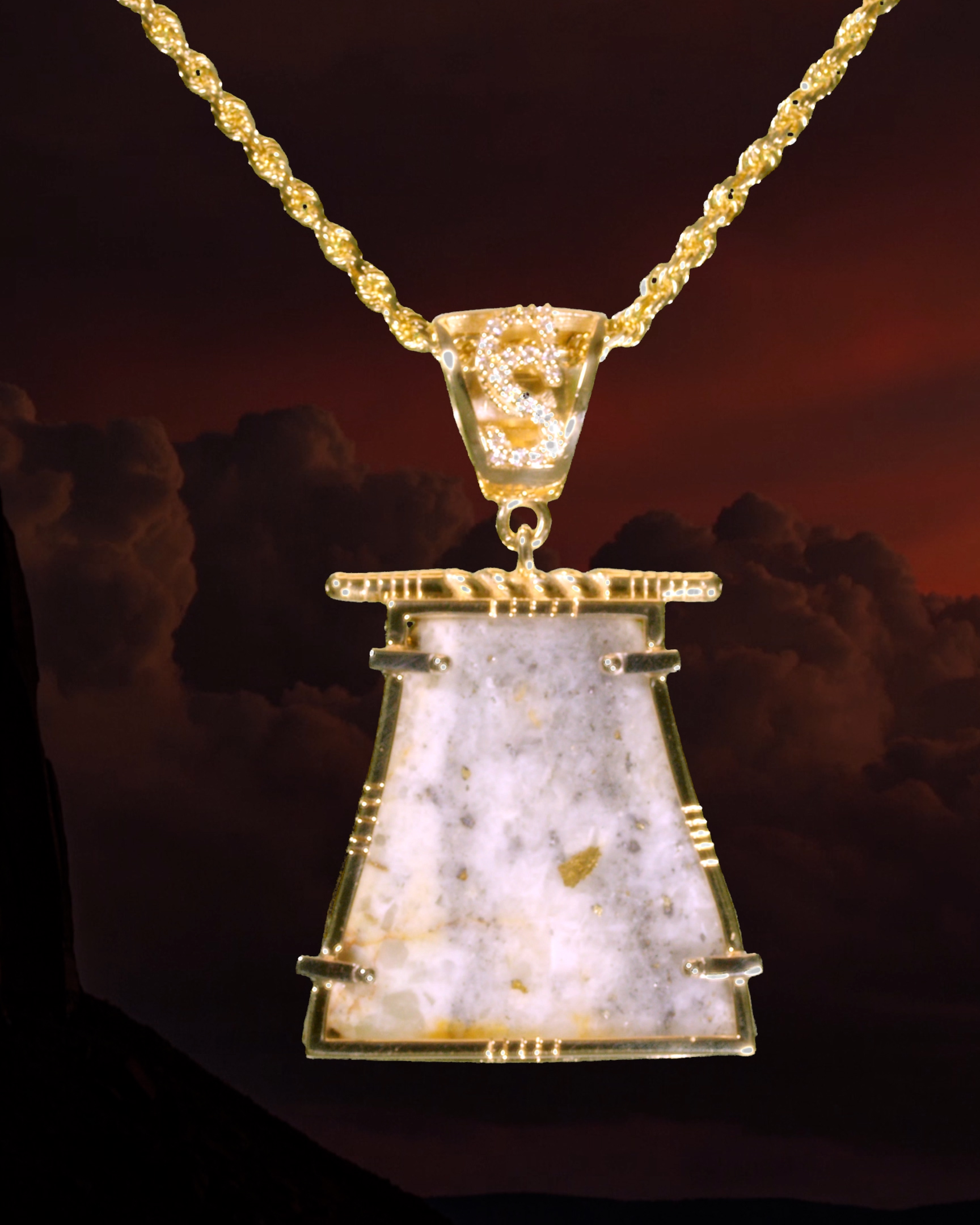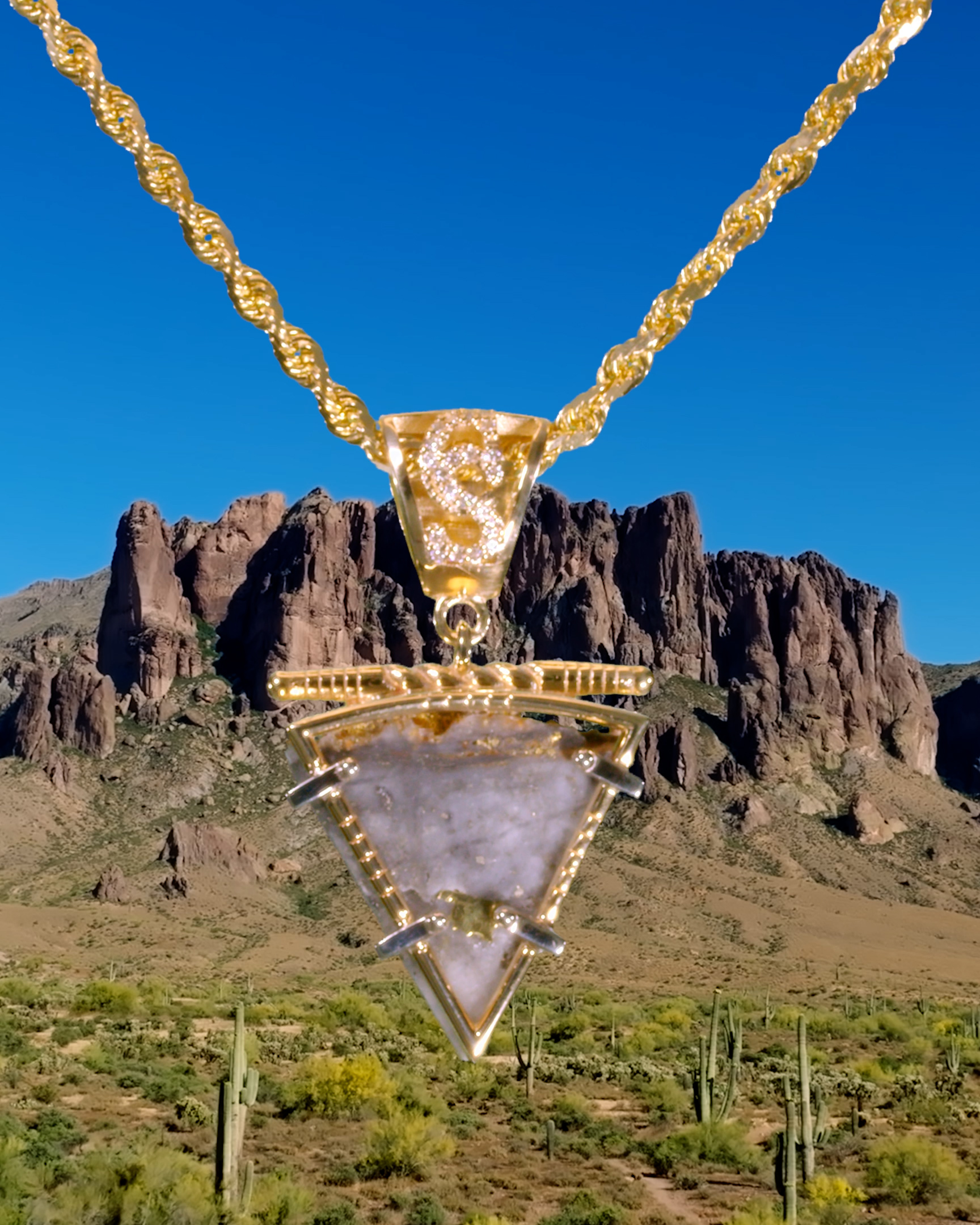In 1911, Thomas Edison struck a deal with Buffalo Bill Cody upon discovering the need for Tungsten in his lightbulb filaments. The Tungsten sourced from the Cody Stone became integral to Edison’s early lightbulbs, which would go on to light the world.

Cody Stone Gemstone: Unveiling the geological, scientific marvel.
The thermal creation of the combination of 11 precious metals in Quartz within the Cody Stone Gemstone represents a geological marvel discovery making it stand alone as one of the rarest gemstones on earth.
- Geological Complexity:
- The presence of 11 natural precious metals, including gold, silver, copper, tungsten, iron, lead, zinc, cobalt, titanium, chromium, and nickel, within the Quartz matrix of the Cody Stone Gemstone signifies a complex geological history. The coexistence of multiple metals in a single gemstone highlights the intricate interplay of geological processes that occurred over millions of years.
- Rare Combination:
- The combination of 11 precious metals within a single Quartz matrix is exceptionally rare and unique in the world of gemology. Each metal has its own distinct formation conditions and geological origins, making the occurrence of all 11 metals together in a single gemstone an extremely rare and remarkable phenomenon.
- Gold (Au):
- Formation: Gold is typically formed through hydrothermal processes where hot fluids carrying gold ions migrate through rocks and deposit gold in veins or nuggets.
- Thermal Process: Under high temperatures and pressures, gold can precipitate out of hydrothermal solutions and accumulate in fractures within the quartz matrix.
- Silver (Ag):
- Formation: Silver is commonly found in association with other minerals such as lead, copper, and gold in hydrothermal veins.
- Thermal Process: Silver can be deposited along with other metals in the quartz matrix as a result of hydrothermal activity, where hot fluids carry silver ions and deposit them in the surrounding rocks.
- Copper (Cu):
- Formation: Copper is often formed in hydrothermal deposits associated with volcanic activity or as a byproduct of other metal deposits.
- Thermal Process: Copper can be precipitated out of hot fluids circulating through the quartz matrix, leading to the formation of copper-rich zones within the gemstone.
- Tungsten (W):
- Formation: Tungsten is commonly found in hydrothermal veins associated with granitic rocks.
- Thermal Process: Tungsten can be transported by hydrothermal fluids and deposited within the quartz matrix under high temperatures and pressures, forming tungsten-bearing minerals.
- Iron (Fe):
- Formation: Iron is a common element in many geological settings and can be found in various mineral forms.
- Thermal Process: Iron can be mobilized and transported by hydrothermal fluids, reacting with other minerals in the quartz matrix to form iron-rich compounds under specific thermal conditions.
- Lead (Pb):
- Formation: Lead is often associated with sulfide minerals in hydrothermal deposits.
- Thermal Process: Lead can be transported by hot fluids and deposited in the quartz matrix as part of sulfide mineral assemblages under the influence of high temperatures and pressures.
- Zinc (Zn):
- Formation: Zinc is commonly found in hydrothermal deposits associated with base metal sulfides.
- Thermal Process: Zinc can be carried by hydrothermal fluids and precipitated within the quartz matrix, forming zinc-bearing minerals under specific thermal conditions.
- Cobalt (Co):
- Formation: Cobalt is often found in association with nickel and copper deposits in hydrothermal settings.
- Thermal Process: Cobalt can be transported by hydrothermal fluids and deposited along with other metals in the quartz matrix, forming cobalt-rich mineral phases under suitable thermal conditions.
- Titanium (Ti):
- Formation: Titanium is commonly found in igneous rocks and mineral sands.
- Thermal Process: Titanium can be mobilized by hydrothermal fluids and incorporated into the quartz matrix, reacting with other minerals to form titanium-bearing compounds under elevated temperatures and pressures.
- Chromium (Cr):
- Formation: Chromium is typically found in chromite deposits associated with ultramafic rocks.
- Thermal Process: Chromium can be transported by hydrothermal fluids and deposited within the quartz matrix, forming chromium-bearing minerals through chemical reactions under specific thermal conditions.
- Nickel (Ni):
- Formation: Nickel is often found in association with sulfide minerals in hydrothermal deposits.
- Thermal Process: Nickel can be carried by hot fluids and precipitated in the quartz matrix as part of sulfide mineral assemblages, forming nickel-rich minerals under the influence of high temperatures and pressures.
- Gold (Au):
- Thermal Processes:
- The formation of the 11 precious metals within the Quartz matrix of the Cody Stone Gemstone involved intricate thermal processes under high temperatures and pressures over extended periods of time. The mobilization, transportation, and deposition of these metals in the gemstone required specific geological conditions and mineral interactions, making the thermal creation of this combination a geological marvel.
- Geological Significance:
- The geological significance of the Cody Stone Gemstone lies in its representation of diverse mineralogical interactions and crystallization mechanisms that led to the incorporation of
multiple precious metals in Quartz. The gemstone serves as a valuable geological specimen that offers insights into the Earth’s mineral diversity and the complex processes that shape rare mineral formations.
- Scientific Discovery:
- The discovery of the Cody Stone Gemstone with its unique composition of 11 precious metals in its Quartz matrix is a significant scientific breakthrough in the field of mineralogy and gemology. The gemstone provides researchers with a rare opportunity to study the geological processes that resulted in the formation of such a complex and diverse combination of metals within a single matrix.
- Rarity and Uniqueness:
- The rarity and uniqueness of the Cody Stone Gemstone, characterized by its 11 precious metals in its Quartz matrix make it stand alone as a highly sought-after and highly prized
gemstone for collectors and enthusiasts worldwide. Its geological marvel discovery adds to its allure and value, cementing its position as a one-of-a-kind geological treasure.
In conclusion, the thermal creation of the combination of 11 precious metals within the quartz matrix of the Cody Stone Gemstone is a geological marvel discovery due to its complexity, rarity, geological significance, scientific importance, and the intricate processes involved in the formation of this exceptional gemstone. The Cody Stone Gemstone is an indisputable testament to the geological wonders of earth and the fascinating interplay of geological forces that have shaped its unique composition. It stands alone as one of the rarest, richest, most coveted gemstones on earth.
